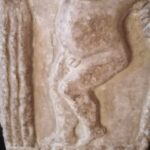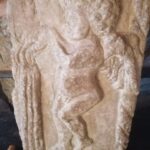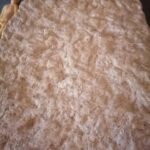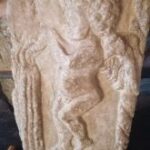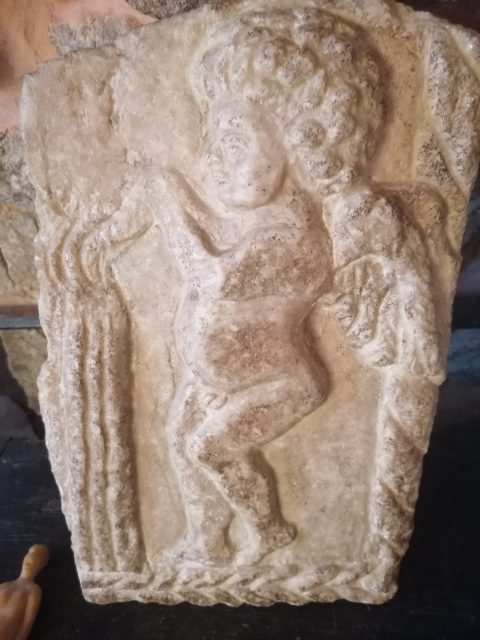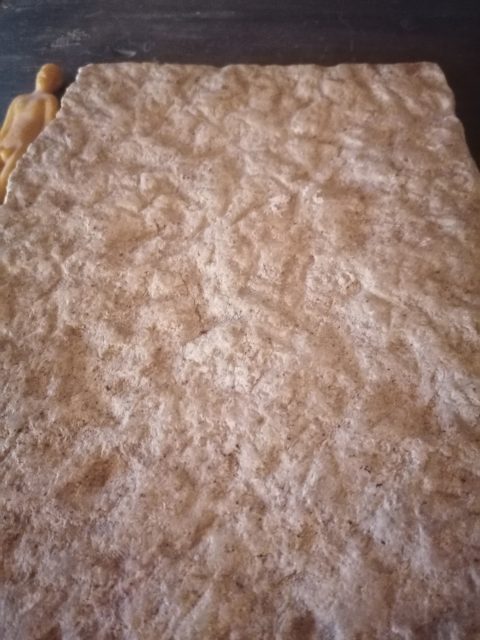1378) ROMAN SARCOPHAGUS LID SECTION OF AN ANGEL CIRCA 300 AD: Severe Dynasty, 193 – 235 A.D. Made of Proconessian marble.
Discussion: Roman sarcophagi are works of carved art. A complete lid can sell for tens of thousands of dollars. As a result, the vast majority of sarcophagi in collections are fragments. This example is carved in high relief. It belongs to a type of sarcophagus known as ‘strigillate sarcophagi,’ which became popular in Rome between the 2nd and 4th centuries. These sarcophagi were placed in hypogea ( underground vaults) and family mausoleums, where several tombs were placed together, touching each other on the sides or arranged in narrow niches. For this reason, the sides are always worked in lower relief, as this avoids breakage in the event of rubbing against other sarcophagi or the walls of the niches. The sarcophagus production industry was supplied by the Luni-Carrara and Pronnesian quarries. Pronnesian marble is characterized by its white color and cerulean sfumature, uniform or with bluish-grey veins. The quarries, under Imperial ownership, were located in the present-day Turkish towns of Monastyr, Kavala, and Saraylar, on the island of Marmara or the Proconnesian island of the Propontide or Sea of Marmara, which in Roman times was administratively dependent on the ancient city of Cizico on the Anatolian coast.
Dimensions: 12 X 6 inches.

